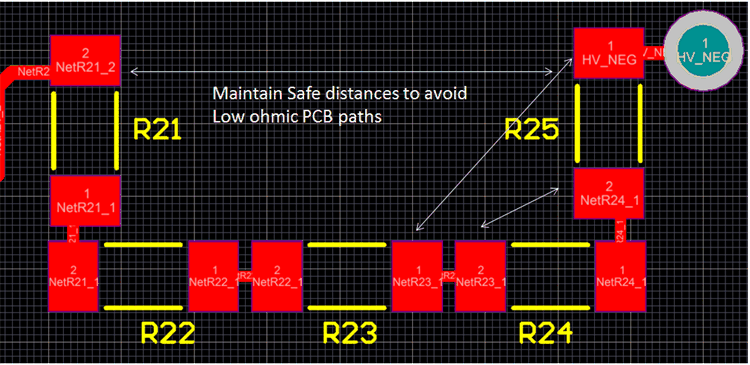TIDUDJ6B August 2022 – February 2023 OPA388-Q1
- Description
- Resources
- Features
- Applications
- 5
- 1System Description
- 2System Overview
- 3Hardware, Testing Requirements, and Test Results
- 4Design Files
- 5Software Files
- 6Related Documentation
- 7Trademarks
- 8Revision History
4.3 PCB Layout Recommendations
The PCB layout for isolation leakage current measurements must be based on the requirements and components selected for the design.
- The high-voltage section of the system must not have any polygons to HV positive, HV negative, or chassis ground.
- Place MELF resistors in series or a series parallel combination that maintains the isolation and does not allow any low-ohmic paths due to PCB, humidity, or liquids, which are all probable occurrences on the PCB.
 Figure 4-1 Placing MELF Resistors
Figure 4-1 Placing MELF Resistors - Maintain creepage and clearance distances required for isolation components (AMC1301-Q1) as explained in the device data sheet.
- To minimize noise, take care when placing analog lines to avoid noise from relays and power switching components.
- Follow the component data sheet to minimize the EMC issues on layout.